A Lesson In How To Smell Better.
Chapter Three, Part Seven.
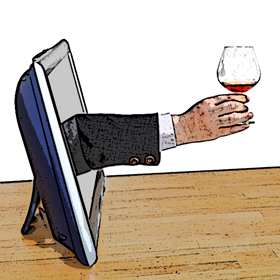 Late in 1993 an ENT specialist assured me that sinus surgery would not affect my sense of smell. He lied.
Late in 1993 an ENT specialist assured me that sinus surgery would not affect my sense of smell. He lied.
Months after the surgery I still couldn’t smell which was a little disconcerting since I was about to make wine sniffing my life’s work. I felt like Manny Ramirez facing Mariano Riviera in the bottom of the ninth – minus the steroids.
The surgery made my sense of smell spotty and inconsistent which made analyzing wine difficult. I had to get my schnoz back in shape so I sent it to basic training snoot camp. I’d go to a wine tasting and smell every wine in the room. When I had a snoot-full and thought about quitting I’d hear this drill sergeant in my head screaming, “Come on Carter! Gimme 50 more! You can do it ya pussy! Sniff that Beaune, smell that Pfalz!” Within a year I probably stuck my nose in 10,000 wine glasses, which wasn’t nearly as much as I stuck it in other people’s business. The work paid off and today my nose runs constantly.
Read MoreWine Evaluation; The Nose Knows No’s Not An Option.
Chapter Three, Part Six.
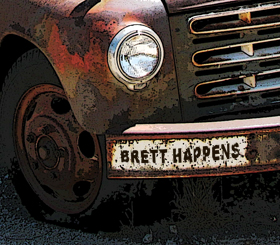 In certain wine circles people share the opinion that the difference between an aroma and a bouquet has to do with the age of the wine. They believe that young wines display aroma, and only when wine reaches maturity will it develop a bouquet. While studying for my Sommelier certificate, I was taught that aroma comes from the grape variety and bouquet stems from the vinification process. I, of course, don’t subscribe to either school of thought.
In certain wine circles people share the opinion that the difference between an aroma and a bouquet has to do with the age of the wine. They believe that young wines display aroma, and only when wine reaches maturity will it develop a bouquet. While studying for my Sommelier certificate, I was taught that aroma comes from the grape variety and bouquet stems from the vinification process. I, of course, don’t subscribe to either school of thought.
Don’t Be So Sensitive; Sensory Adaptation & Wine Tasting.
Chapter Two, Part Seven.
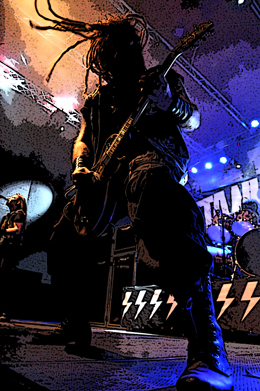 As a regular reader of WineSnark, you’ve learned the various ways your body perceives flavor so now you can relax, have a bite to eat and enjoy a glass of wine. Once you do however, you might as well throw all you’ve learned into the recycle bin because when you introduce new chemical compounds to your body the equation changes. By the way, my wife just loves it when she cooks all day and I tell her she’s made a delicious “chemical compound”.
As a regular reader of WineSnark, you’ve learned the various ways your body perceives flavor so now you can relax, have a bite to eat and enjoy a glass of wine. Once you do however, you might as well throw all you’ve learned into the recycle bin because when you introduce new chemical compounds to your body the equation changes. By the way, my wife just loves it when she cooks all day and I tell her she’s made a delicious “chemical compound”.
Food is just one of the many things that can affect your sensory perceptions, most of which you can control about as well as a bad comb-over on a windy day.
Read MoreVisual Wine Inspection; Looking For Clarity, Color & Intensity.
Chapter Three, Part Five.
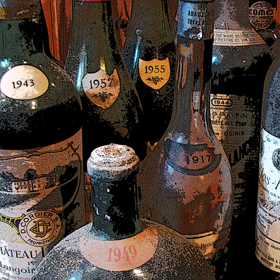 When analyzing wine a vigilant visual inspection will give you some clues as to the condition, age and style of the wine. Visual indicators may also offer you the first tip-off that the wine is flawed. For example, bad wine is often cloudy, off-color, or has a cute animal on the label.
When analyzing wine a vigilant visual inspection will give you some clues as to the condition, age and style of the wine. Visual indicators may also offer you the first tip-off that the wine is flawed. For example, bad wine is often cloudy, off-color, or has a cute animal on the label.
Begin your visual examination by checking the wine for clarity. Wine can become cloudy if bacterium gets inside the bottle, but before you turn that murky bottle into a grab bag gift at the office Christmas party you should know there is another cause for cloudiness that is not considered a flaw.
Read MoreVisual Wine Inspection, Bubble Trouble & Cosmic Crystals.
Chapter Three, Part Four.
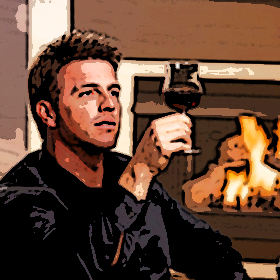 The first step of wine analysis is to take a good look at your wine. For this you will need an acceptable wine glass. You may be emotionally attached to that old Flintstones tumbler you’ve had since grade school, but it’s time to buy some nice stemware and part ways with Fred and Barney.
The first step of wine analysis is to take a good look at your wine. For this you will need an acceptable wine glass. You may be emotionally attached to that old Flintstones tumbler you’ve had since grade school, but it’s time to buy some nice stemware and part ways with Fred and Barney.
A good-sized, tulip-shaped glass with a thin rim will do nicely for most wines, providing it is clear. Avoid glasses that are tinted or painted. I’m sorry gentlemen but the logo of your favorite sports franchise may be appropriate glassware for the man-cave, but it’s unacceptable on your wine glasses. I know you’re reluctant to give up the team logo but if your wives were on the Pulitzer Prize committee, this stipulation would make Wine Snark a shoe-in for the award.
Read More



















